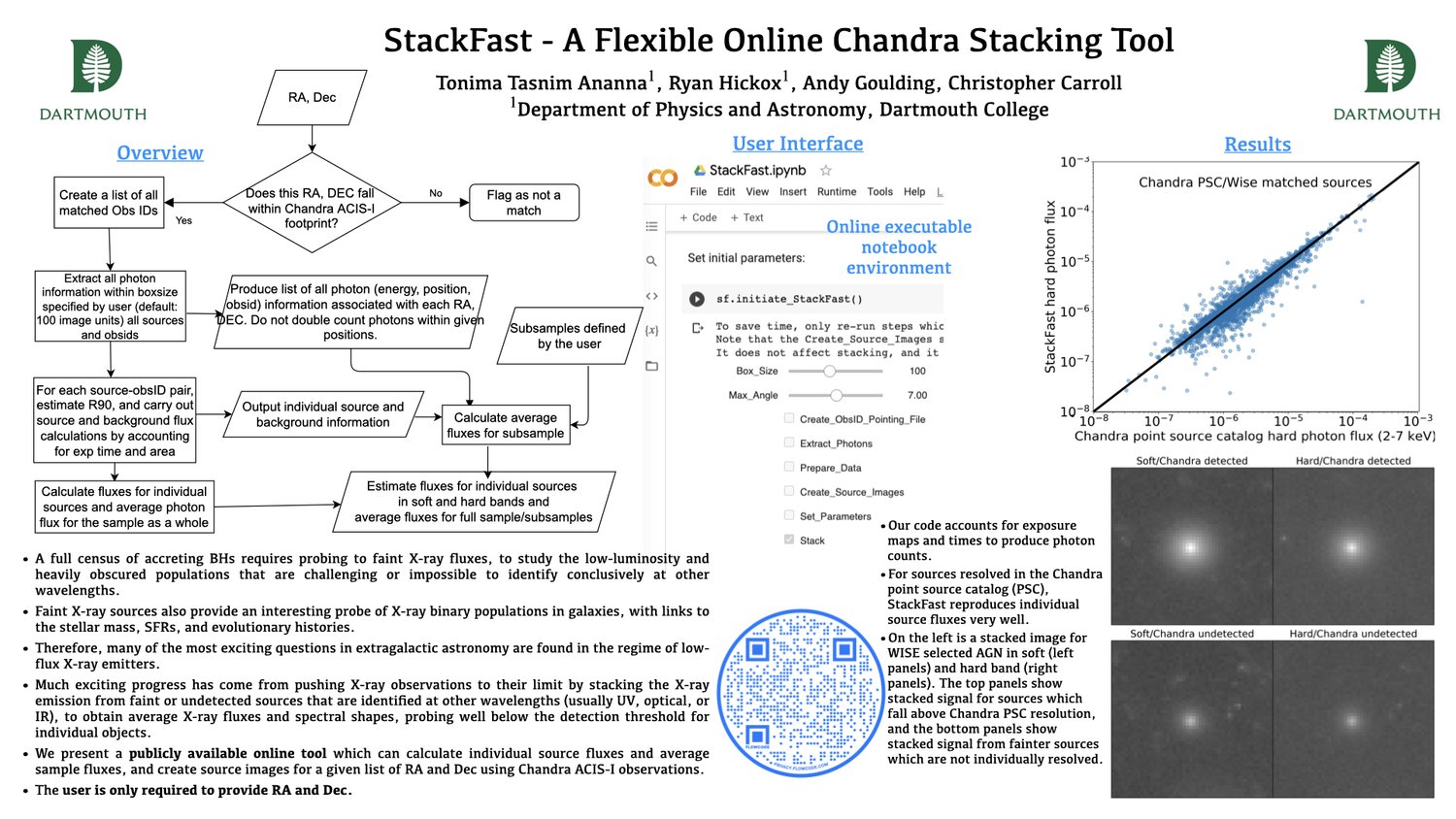-
StackFast
-
README.md
-
StackFast Modules.drawio.png
-
StackFast.png
-
StackFast.py
-
StackFast_Modules.drawio.png
-
inside_polygon_check.py
-
one_time_only_stackfast_functions.py
-
python_idl_funcs.py
-
sf_main_set_functions.py
-
sf_special_utils.py
-
sf_subset_functions.py
StackFast
A full census of accreting BHs requires probing to faint X-ray fluxes, to study the low-luminosity and heavily obscured populations that are challenging to identify conclusively at other wavelengths. Faint X-ray sources also provide an interesting probe of X-ray binary populations in galaxies, with links to the stellar mass, star formation rates, and evolutionary histories. Therefore, many of the most exciting questions in extragalactic astronomy are found in the regime of low-flux X-ray emitters.
StackFast allows stacking of X-ray data from the entirety of Chandra ACIS-I footprint. All Chandra ACIS-I observations are hosted online and the code (link below) is also executable online. The user initially needs to provide positional information, using which StackFast extracts photons from Chandra observations. With this extracted photon information, the user can define as many subsets of sources from the main list (binned in other properties, for instance, using WISE color bins) and calculate their average population properties (such as average photon fluxes in hard and soft energy bands) as needed. The photon extraction only occurs once, which makes the subsequent analysis very quick.
The code is fully executable online as a jupyter notebook, and can be found here: https://colab.research.google.com/drive/1jiB2IwnV7fyGdqzxD9NaAqZ5fXMPCJQD?usp=sharing
The notebook describes (in markdown) how to proceed with each step of the analysis), but I can also do a quick zoom call to explain how to use it if you reach out at tonima.ananna@dartmouth.edu.
All products are saved to the user's google drive, so that each session (set of objects) can be revisited and reanalysed many times using the extracted photon information.
This is an overview of the steps taken by the data:

This is a poster from HEAD Meeting 2022 summarizing one application of StackFast:

As shown in the poster, we are able to recover the fluxes of sources detected by Chandra Point Source Catalog very well, and we are able to show a significant detection for WISE selected AGN whic hare not individually resolved in Chandra in the stacked signal (lower two panels of the four panel plot above). This software has already been used to uncover a Compton-thick intermediate mass black hole in a dwarf galaxy:
https://chandra.si.edu/press/22_releases/press_011022.html
And study IR detected obscured AGN samples without any resolved X-ray detections:
https://iopscience.iop.org/article/10.3847/1538-4357/abd185/pdf
This is a summary of the functions in each module and how they are connected.
- The StackFast.py is the main script.
- Most of the analysis occurs using functions in sf_main_set_functions.py.
- If a subsample of the original sources are being analysed, information from the main set is extracted using sf_subset_functions.py.
- Utilities (sf_special_utils.py) contains utils used by most other function in the modules above.
- python_idl_funcs.py contains IDL native functions which I translated to python for StackFast
The functions are described within the code:
